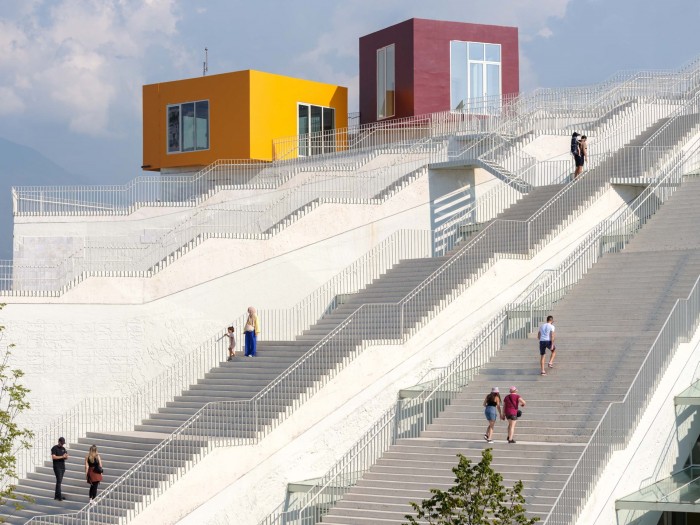The Pyramid of Tirana, a 20-metre-tall concrete structure in Tirana, Albania, has been dramatically transformed into a public space.
Originally built as a museum dedicated to Enver Hoxha, communist dictator of Albania from 1944 until his death in 1985, it opened in 1988. Following the fall of the communist regime in 1991, the pyramid took many forms: it was used as a radio station, a nightclub and a conference venue, and served as a NATO base during the 1999 Kosovo War.
Then the building fell into disrepair. ‘For many Albanians, the pyramid is a symbol of victory over the regime,’ states Netherlands-based architecture and urban design practice MVRDV. ‘After the death of the dictator, the deteriorating structure … served as a hangout spot for Tirana’s youth, who would climb the sloping beams and – not without risk – slide back down.‘
In 2017 the Albanian government announced plans to transform the concrete landmark into a space that gives back to the people. Working with IRI Architecture, a Tirana-based studio, MVRDV repurposed the existing structure to create a new cultural hub consisting of cafes, studios, workshops, offices, classrooms and public gathering spaces.
‘Steps have been added to the building’s sloping façades, allowing the people of Albania to literally walk all over the showpiece of the former dictator,’ notes MVRDV.The steps also give safe access to a viewing platform, and a lift has been added. One side incorporates a sloped section where people can still slide to the bottom – a nod to the pyramid’s informal history.
Stacks of colourful boxes have been scattered in and around the structure and the surrounding park. Four of these are located on top of the pyramid and several are inside, each serving as a space for education and socialising. Half of these colourful boxes will house the non-profit educational institution TUMO Tirana, which provides free after-school education for 12- to 18-year-olds in subjects such as software, robotics, animation, music and film.
Read More







